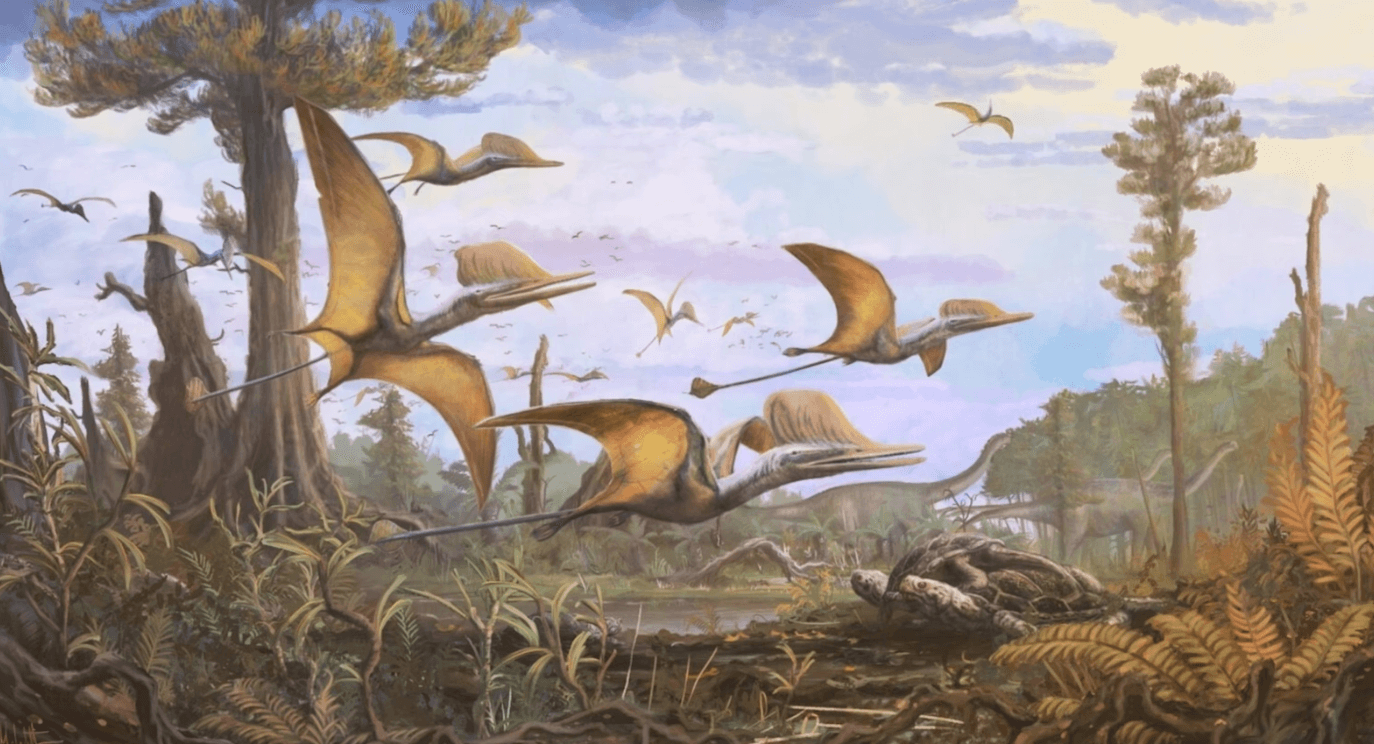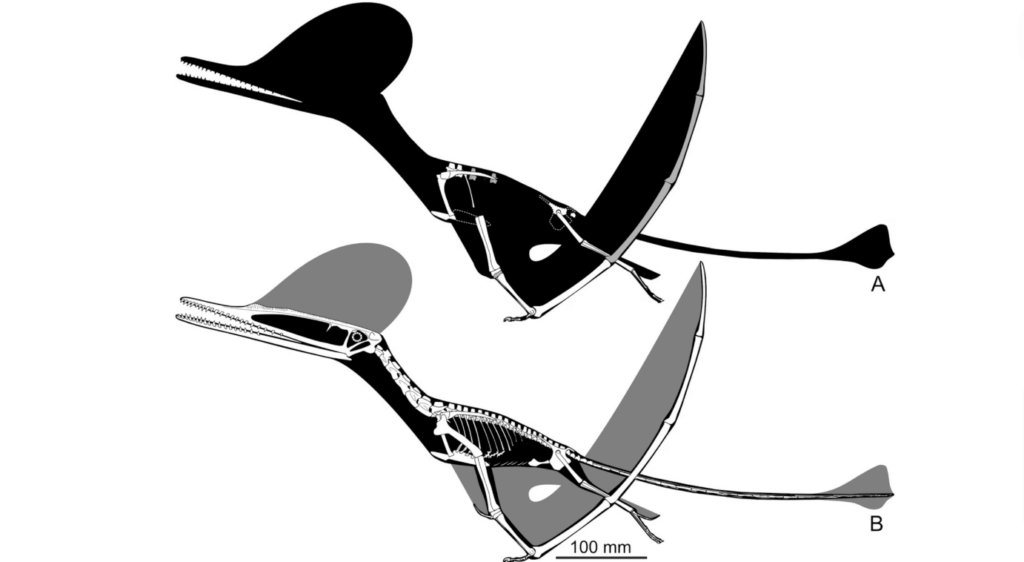In a groundbreaking discovery that has sent shockwaves through the scientific community, researchers have unearthed the remains of a colossal flying dinosaur on the Isle of Skye in Scotland. The skeleton, identified as belonging to a species named Ceoptera evansae, is estimated to have lived an astonishing 166 to 168 million years ago during the Middle Jurassic period.
Led by a team of experts from the Natural History Museum, University of Bristol, University of Leicester, and University of Liverpool, the findings of this remarkable discovery were recently published in the prestigious Journal of Vertebrate Paleontology.
The initial discovery of Ceoptera evansae’s incomplete fossilized remains dates back to 2006, when fragments were first unearthed on a remote beach along the Loch Scavaig coastline, nestled within the picturesque Strathaird Peninsula on the Isle of Skye. Since then, meticulous analysis and digital scanning techniques have revealed much information about this ancient creature, shedding light on its size, structure, and evolutionary significance.
What makes this discovery even more remarkable is the unexpected location of the find. While similar species of pterosaurs belonging to the Darwinoptera group have been previously unearthed in China, Ceoptera evansae in Scotland suggests a broader geographical distribution than previously believed. This revelation has prompted researchers to reconsider the timeline of pterosaur evolution, implying that these magnificent creatures may have inhabited the Earth for a more extended period than previously thought, spanning from the Early Jurassic to the latest Jurassic periods.
Professor Paul Barrett, a merit researcher at the Natural History Museum and senior author of the paper, expressed his astonishment at the discovery, describing it as a ‘complete surprise’ in the press release. He emphasized the importance of Ceoptera evansae in elucidating critical events in the evolution of flying reptiles, highlighting its role in shaping our understanding of these enigmatic creatures.
Furthermore, Dr. Liz Martin-Silverstone, a palaeobiologist from the University of Bristol and lead author of the paper, underscored the significance of this finding in advancing our knowledge of pterosaur evolution. She emphasized the rarity of specimens from this crucial period and hailed the discovery as a significant step towards unraveling the mysteries of pterosaur evolution.
As researchers continue to analyze and interpret the wealth of data this extraordinary discovery provides, it is evident that Ceoptera evansae holds the key to unlocking new insights into the ancient world of flying dinosaurs. With each new revelation, our understanding of prehistoric life grows ever richer, fueled by the tireless efforts of dedicated scientists determined to unravel the secrets of the past.
Other POP! stories you might like:
Dogs can see the world through their nose, study says
Rare ‘dinosaur-like’ snapping alligator turtle discovered in England
Guinness World Records puts Bobi’s ‘Oldest Dog Ever’ title on hold amid doubts about his age




